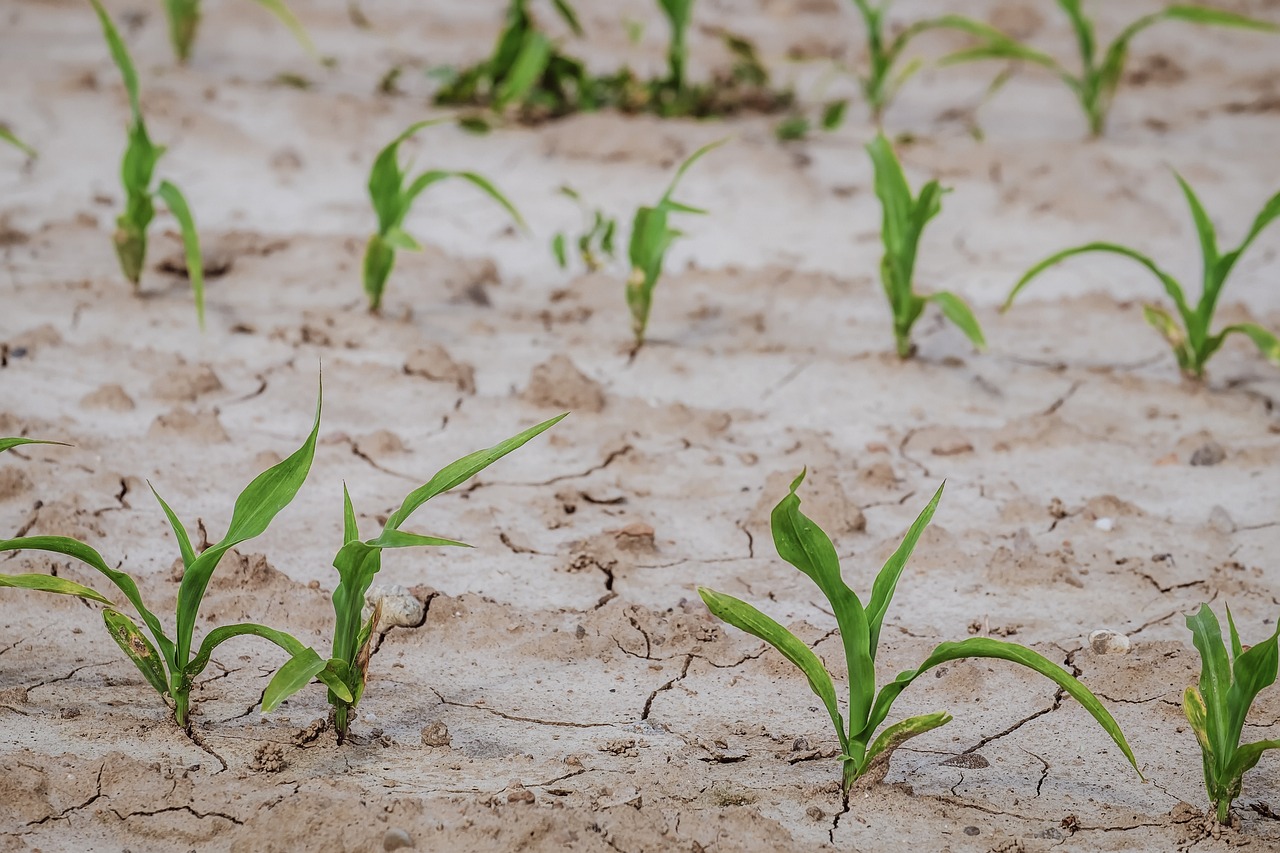Every time I write about this, conditions are even worse. If you look at the latest map from the U.S. Drought Monitor, you will see that almost all of America’s heartland is now in some state of drought. Much of Kansas is dealing with either “severe” or “exceptional” drought, and in previous articles I have written about how this will impact the winter wheat harvest. But now areas that grow most of our corn and most of our soy are also getting absolutely hammered by drought. If this drought in America’s breadbasket continues through the summer, we are going to have a very serious problem on our hands.
At this point, farmers all over the middle of the country are praying for rain, because right now things are not looking good…
Below-average rainfall and high winds also exacerbated drought conditions in much of the High Plains region from top spring wheat producer North Dakota to the largest winter wheat state Kansas, the U.S. Drought Monitor report showed.
Concerns about the dry start to the U.S. summer crop season and potential harvest shortfalls have sent corn and soybean prices soaring to multi-month highs, although both crops can still rebound with timely rains.
The last time that I wrote about this, a little bit more than a third of all U.S. corn was being grown in areas affected by drought.
Now, 64 percent of our corn and 57 percent of our soy is being grown in areas that are affected by drought…
Drought continues to be a major story for farmers this year, and new data shows drought conditions are deepening across the Midwest. According to the National Drought Mitigation Center, 64% of the corn crop and 57% of the soybean crop across the U.S. are now covered in drought. That’s a sizable jump in just a week, which is reflected in the ongoing decline in crop conditions.
In other words, conditions are deteriorating very rapidly.
According to the latest report, only 55 percent of U.S. corn is rated good to excellent. The last time we witnessed such a low level was in 1992…
Nationally, USDA-NASS says 55% of the corn crop is rated good to excellent. Lance Honig, NASS Crops Branch Chief, says there are only two years in history where condition ratings have been lower for this week: 1992, when 52% of the crop was rated good to excellent and 1988 with a 37% good to excellent rating.
It has been more than three decades since we have seen anything like this.
And in the key corn-producing state of Illinois, only 36 percent of corn is rated good to excellent…
“I’m very concerned about the weather,” said Sherman Newlin, who grows corn and soybean in Illinois. “We have low humidity, 90-degree temperatures and now the wind is sucking the moisture out of crops really fast.”
Conditions have been particularly poor in Illinois, the No. 2 US producer. Only 36% of the state’s crop was rated good to excellent for the week ending June 18, down 12 percentage points from a week earlier.
“I was shocked at the big drop in Illinois ratings,” Newlin said. “I knew we were bad, but: Wow.”
Big trouble is brewing, and most Americans have no idea that this is happening.
The bad harvests that we had last year have already pushed food prices to ridiculous levels, and now it appears that the price of corn could be headed a lot higher…
Futures in Chicago have jumped more than 12% over four sessions, the biggest such gain since early March 2022, when the outbreak of the war in Ukraine rattled grain markets.
Meanwhile, it appears that the orange harvest in Florida is going to be even worse than the experts were projecting…
Predicted crop production numbers have been dropping since December 2022, when the U.S. Department of Agriculture National Agricultural Statistics Service estimated that 20 million boxes of oranges would be produced. 20 million boxes would have been a 51 percent decrease from 2021’s season.
But the state’s produced just under 16 million boxes of oranges through May, which amounts to a 60 percent decline in production, according to Florida Department of Citrus Director of Economic Market and Research Marisa Zansler.
I hope that you don’t like orange juice.
Because it is about to get really expensive.
And I wouldn’t count on eating a whole lot of beef in the year ahead either, because the size of the U.S. beef cow herd is “the smallest since 1962”.
It is almost as if some sort of a “perfect storm” has hit U.S. food production.
No matter what the Federal Reserve does with interest rates, food prices are going to continue to surge higher in the months ahead, and that is because we are simply not producing as much food as we normally do.
And of course U.S. farmers are facing operating costs that continue to spiral out of control. For instance, an excellent article that Zero Hedge has just published has some sobering news about used farm equipment…
A proprietary used farm equipment price tracker published by Jefferies showed clients this week that “used farm equipment shows continued strong pricing as we move through 2023.”
Jefferies scraped used equipment website MachineFinder. Its analysts found large farm equipment was up 13% year-over-year in June, while small farm equipment was up 11.4%. The most significant price move was a 42.% jump in combines.
Sadly, the U.S. is not alone.
Drought, flooding, natural disasters and extremely bizarre weather patterns are devastating crops all over the planet.
And that is really bad news, because even CNN has admitted that we are already in the worst global food crisis in modern history.
You may not want to hear this, but the coming global famine has already begun.
In the western world, this will initially manifest itself in higher prices.
In poorer areas of the planet, people are dying from starvation even as you read this article.
But because the corporate media is not making a big deal out of this, many of you still believe that everything is just fine…
About the Author: My name is Michael and my brand new book entitled “End Times” is now available on Amazon.com. In addition to my new book I have written six other books that are available on Amazon.com including “7 Year Apocalypse”, “Lost Prophecies Of The Future Of America”, “The Beginning Of The End”, and “Living A Life That Really Matters”. (#CommissionsEarned) When you purchase any of these books you help to support the work that I am doing, and one way that you can really help is by sending copies as gifts to family and friends. Time is short, and I need help getting these warnings into the hands of as many people as possible. I have also started a brand new Substack newsletter, and I encourage you to subscribe so that you won’t miss any of the latest updates. I have published thousands of articles on The Economic Collapse Blog, End Of The American Dream and The Most Important News, and the articles that I publish on those sites are republished on dozens of other prominent websites all over the globe. I always freely and happily allow others to republish my articles on their own websites, but I also ask that they include this “About the Author” section with each article. The material contained in this article is for general information purposes only, and readers should consult licensed professionals before making any legal, business, financial or health decisions. I encourage you to follow me on social media on Facebook and Twitter, and any way that you can share these articles with others is definitely a great help. These are such troubled times, and people need hope. John 3:16 tells us about the hope that God has given us through Jesus Christ: “For God so loved the world, that he gave his only begotten Son, that whosoever believeth in him should not perish, but have everlasting life.” If you have not already done so, I strongly urge you to invite Jesus Christ to be your Lord and Savior today.

